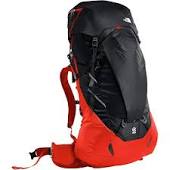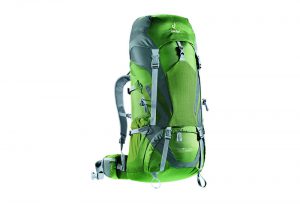We spend a lot of time recommending to each other the best hikes to head out on. When we do it, we give a lot of advice about things to see and do on the walk. We talk about the difficulty of the terrain, and the scenery to look out for on the way. We point out all the landmarks that will help us stay on track, and all the great places to eat or drink when we’re stopping for refreshments. We might even impart a little wisdom on the best gear to take along for the journey; what kind of clothing is likely to be required, and the latest and greatest in cooking equipment. The one thing we don’t talk about as much as we should is the most fundamental piece of equipment at all; the backpack.
It’s about time we addressed this. The hobby is called ‘backpacking’ after all, and that’s because without the gear we’d be limited to day trips! We all tend to assume that a backpack is a backpack, and everyone is happy with their own kit. That isn’t necessarily the case. We’ve all probably had the same issues with backpacks before now; straps that cut your shoulders, poor waterproofing, inconvenient compartment sizes, and fragile materials. If you’ve never injured your hand trying to cram a wet tent back into a backpack at the end of a rainy hike, you’re a better backpacker than us!
Not all backpacks are equal. Because we’ve taken the time to look into the best options out there, we thought it would be polite to share that information with you. Here’s our opinion on the best backpacks that have been released in the past twelve months.
Backpacks broadly divide into two categories; packs designed for a single day’s travel, and packs that stay with you for a week or more. The main difference is size, although there’s a more complete explanation of the differences here. Almost any backpack is fine for single day use, so we’ll focus on on the heavy-duty options.
North Face Prophet 100
North Face consider themselves to be a ‘one stop shop’ when it comes to all things outdoors, and they regularly appear in ‘best of’ lists on many websites and publications. It was inevitable that we’d include something from North Face on our list of recommendations, and so it makes sense to start with it. The North Face Prophet 100 is expensive, but it’s a beast of a backpack that should see you through any escapade.

The intelligent design of the hip belt means that it automatically adjusts with your stride, ‘learning’ the way you walk and adjusting itself to keep the bulk of the pack’s weight from acting against your natural rhythm. That makes it a lot less tiring to carry than most packs of the 100-liter size are. A wire frame keeps weight evenly distributed around the pack too, reducing the strain or torque on your body. A huge front pocket should be big enough to carry at least a couple of days worth of clean clothes on its own, or anything else you may want quick access to. A side zipper means that the contents of the entire pack remain available without digging everything out from the top down.
Osprey Exos or Eja 58
If you have sensitive skin, or have become tired of hard edges pushing against your hip and your back on a long walk, the Osprey Exos 58 may be the backpack of your dreams. It’s barely over half the size of the North Face Prophet 100, but 58 liters is still a lot of storage, and you won’t find a more lightweight pack with this much storage. Soft, cuddly and kind of cute – it sounds more like we’re writing a Fluffy Favourites review than a review of a heavy-duty backpack, but it really is every bit as gentle and charming as the characters in the legendary online slot. The game famously revolves around the antics of a gang of stuffed toys – the sort you probably owned when you were much younger – and if ever a backpack felt like a stuffed toy, it’s this one.

Where Osprey have been particularly smart is making unique versions for men (the Exos) and women (the Eja), accounting for the differences in male and female physiology with the straps and the suspension. The difference is subtle, but ensures that whatever your sex the bulk of the weight is efficiently transported to the hips, reducing back strain. It isn’t as hard-wearing as bags made of firmer material, but that’s the sacrifice you make for comfort.
Deuter Aircontact Lite 65+10
If you’re looking for a compromise option somewhere between the massive capacity of the North Face backpack and the comfort of the Osprey offering, then the Deuter Aircontact is probably the one. The 75-liter capacity is almost perfectly pitched between the two, and although the materials it’s made from are quite harsh, it contains one ingenious design feature that solves at least one constant hiking complaint; heat and sweat build up.

The Deuter backpack has a vertical channel incorporated into the back panel which aids airflow, releasing heat and thereby reducing the chance of chafing and sweat building up against the skin. We’re told that hundreds of hours of research went into the unique plastic buckle, which is a collaborative product made in conjunction with YKK and is believed to be almost unbreakable. Multiple compartments within the backpack make it a favorite for those who love to be extra-organized on long journeys, and the aluminum frame distributes weight efficiently across its X-shaped frame. If we had to raise one minor issue with it, the hip belt is a bit stiff, but not to the point where it becomes uncomfortable.
Other backpacks are of course available, and if you have a favorite brand or model, we’re not here to try to talk you round to buying from elsewhere. If, though, you’ve decided that you’ve woken up in a tent with sore, red-grooved shoulders for the last time, any one of these three will help you make those mornings a thing of the past. If you do decide to choose any of them as your next travel companion, let us know how you get on!

Speak Your Mind